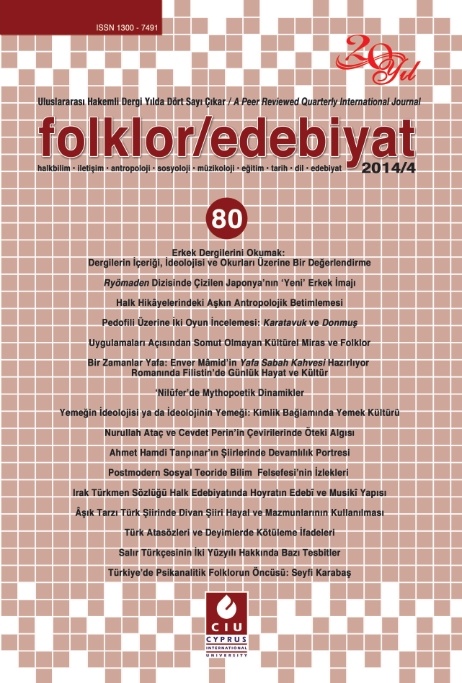Mythen , Märchen Und Träume Als Typische Merkmale Der Postmodernen Literatur In Martin Mosebachs Roman ”Die Türk In“ Im Vergle Ich Mit Peter Handkes “Mein Jahr In Der Niemandsbucht “ Und Orhan Pamuks ”Die Weisse Festung“
Myths, Fairy Tales and Dreams as Typical Features of Postmodern Literature in Martin Mosebach's Novel "The Turk In" Comparing with Peter Handke's "My Year in the No-Man’s Bay" and Orhan Pamuk's "The White Castle"
Author(s): Sedat İnceSubject(s): Metaphysics, Novel, Comparative Study of Literature, Austrian Literature, German Literature, Turkish Literature, Philosophy of Language
Published by: Uluslararası Kıbrıs Üniversitesi
Keywords: Martin Mosebach; Orhan Pamuk; Peter Handke; Die Türkin; Beyaz Kale; Mein Jahr in der Niemandsbucht;
Summary/Abstract: Contemporary postmodern writers often use elements of myth, fairy tales and dream, and as a result, it enables them to intertwine between different time periods or to create a mixture of reality, fairy tale and dream. In this way, they are able to transmit fantastic elements into a realist narration by making reality relative and put forth illusory knowledge transfer of our senses. This unlimited freedom of narration, mostly preferred by postmodern writers, is expressed in the works of contemporary writers by way of putting together all the contrasts creatively. Nevertheless, these unrealistic narrative elements used in a particular frame help the writer to reflect his sense of reality freely. As an example of this, Martin Mosebach’s 1999 novel “Die Türkin” is analyzed here. In this novel, a young German academician who is on the peak of his career, falls in love with a Turkish girl who lives in Germany and instead of going to America for furthering his career, he comes to Turkey after her. Thus, novel creates levels of narration where cultures of east and west collide with each other and this changes the perception of reality. In this study, the novel is analyzed by focusing on these historical myths, fairy tales and dreams used in the narrative. After a brief summary of the plot, the sections related to mythology, fairy tale and dreams are selected, quoted and interpreted. At last, the same narrative elements of “Die Türkin” are compared to the Austrian novelist Peter Handke’s novel “Mein Jahr in der Niemandsbucht“ and the Turkish novelist Orhan Pamuk’s novel “The White Castle ”. The common or similar usages of postmodern elements in these novels are analyzed.
Journal: Folklor/Edebiyat
- Issue Year: 20/2014
- Issue No: 80
- Page Range: 159-170
- Page Count: 12
- Language: German

